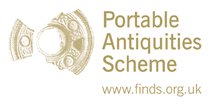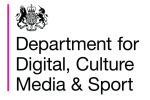Server check!
You are on the training database
Annual report 1998 - 1999

Download the entire document in pdf format.
Summary of the key points
- Expansion: the pilot scheme has expanded to cover more than half of England and the whole of Wales. This came through the establishment of five additional finds liaison officer posts funded by the Heritage Lottery Fund. The public profile of the scheme has also been significantly improved since the appointment of an HLF-funded Outreach Officer.
- Outreach: Through outreach all involved in the Scheme have significantly raised public awareness of the importance of recording finds for our archaeological heritage, and reached new audiences for museums and the heritage sector:224 talks have been given about the Scheme (140 to metal detecting clubs and 84 to other bodies); 166 finds identification days and exhibitions have been staged; 114 pieces in the media have been published or broadcast.
- Objects recorded: 20,698 archaeological objects have been logged which would otherwise have gone unrecorded, adding significantly to our understanding of material culture and the archaeology of England and Wales.
- Publications: Four major publications about the scheme appeared in the last year:
- The first Annual Report was launched in March 1999
- The leaflet Finding our Past was published in August 1999
- The first issue of the Finding our Past newsletter was published by the Museums & Galleries Commission in November 1999 with funding from the Heritage Lottery Fund
- the first issue of the newsletter of the Welsh pilot scheme, Portable Antiquities. Wales, was published in September 1999, also with funding from the Heritage Lottery Fund.
- Sites and Monuments Records: The data being gathered by the liaison officers has now started to be passed on to Sites and Monuments Records, the primary sources of information about the historic environment.
- Findspot information: The liaison officers are meeting with increased success in obtaining precise findspot information from finders, with 59 per cent of finds now being recorded to the nearest 100 square metres or better.
- Finders: The liaison officers have recorded objects found by over 1900 finders, double the first year's total of 994, and maintain regular contact with 95 metal detecting clubs, an increase from 47 in the first year.
- Number of finds recorded: Where statistics were kept on the numbers of finds recorded before the liaison officers took up their posts, it can be shown that they have generally at least doubled the number of finds being recorded and have often achieved much higher increases.
- Non metal-detected finds: The numbers of objects being recorded from members of the public other than detector users has increased from 10 per cent to 13 per cent of the total. Worked stone and pottery account for 12 per cent of all objects recorded.


